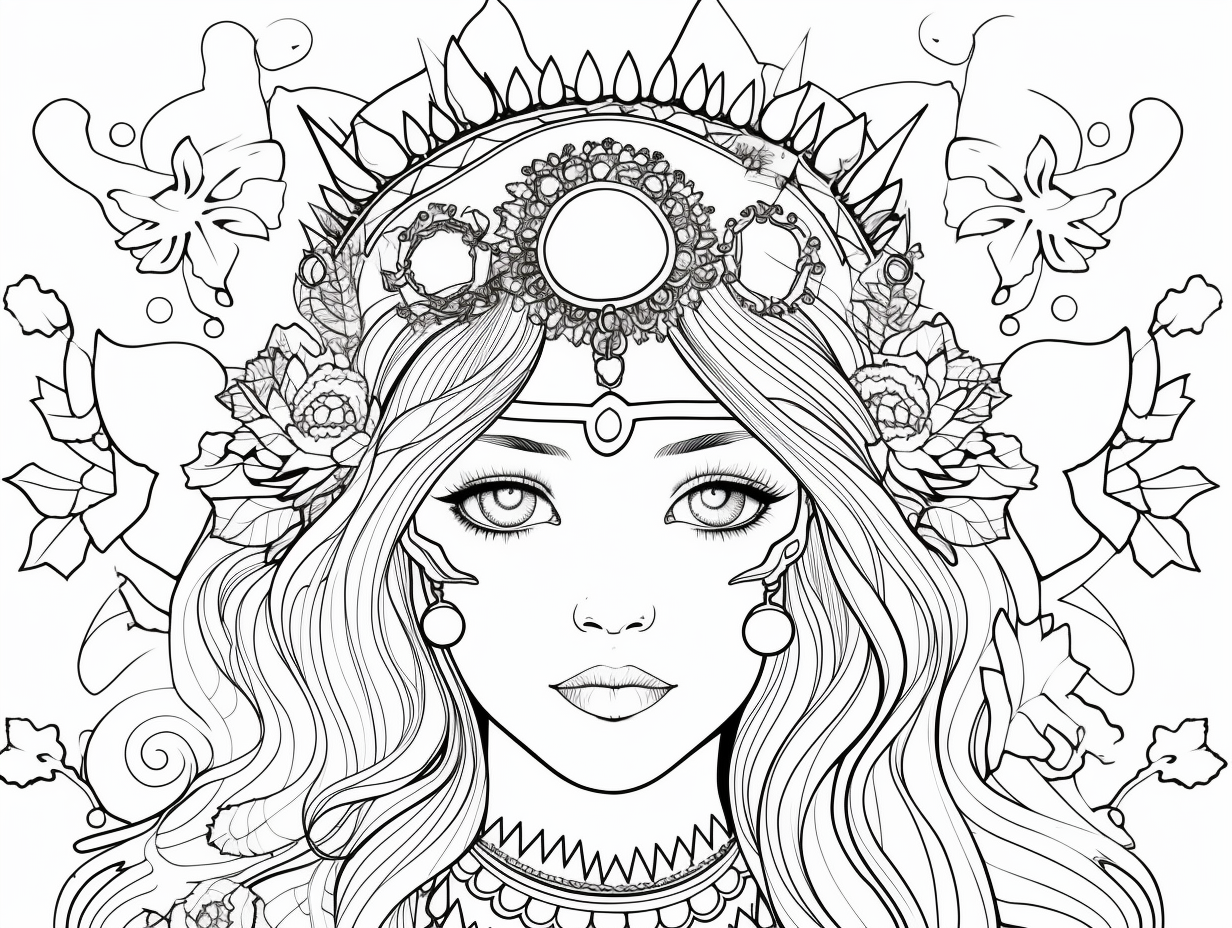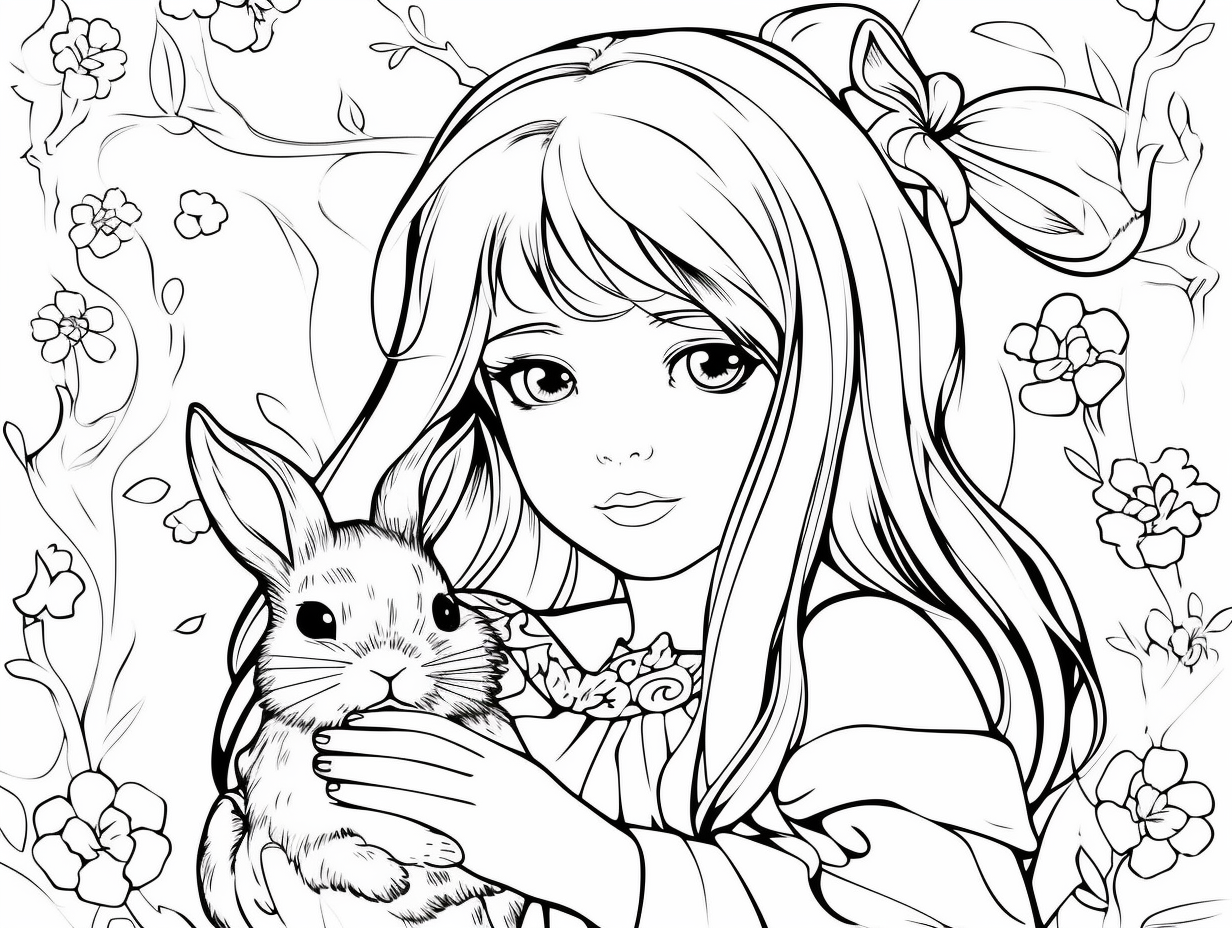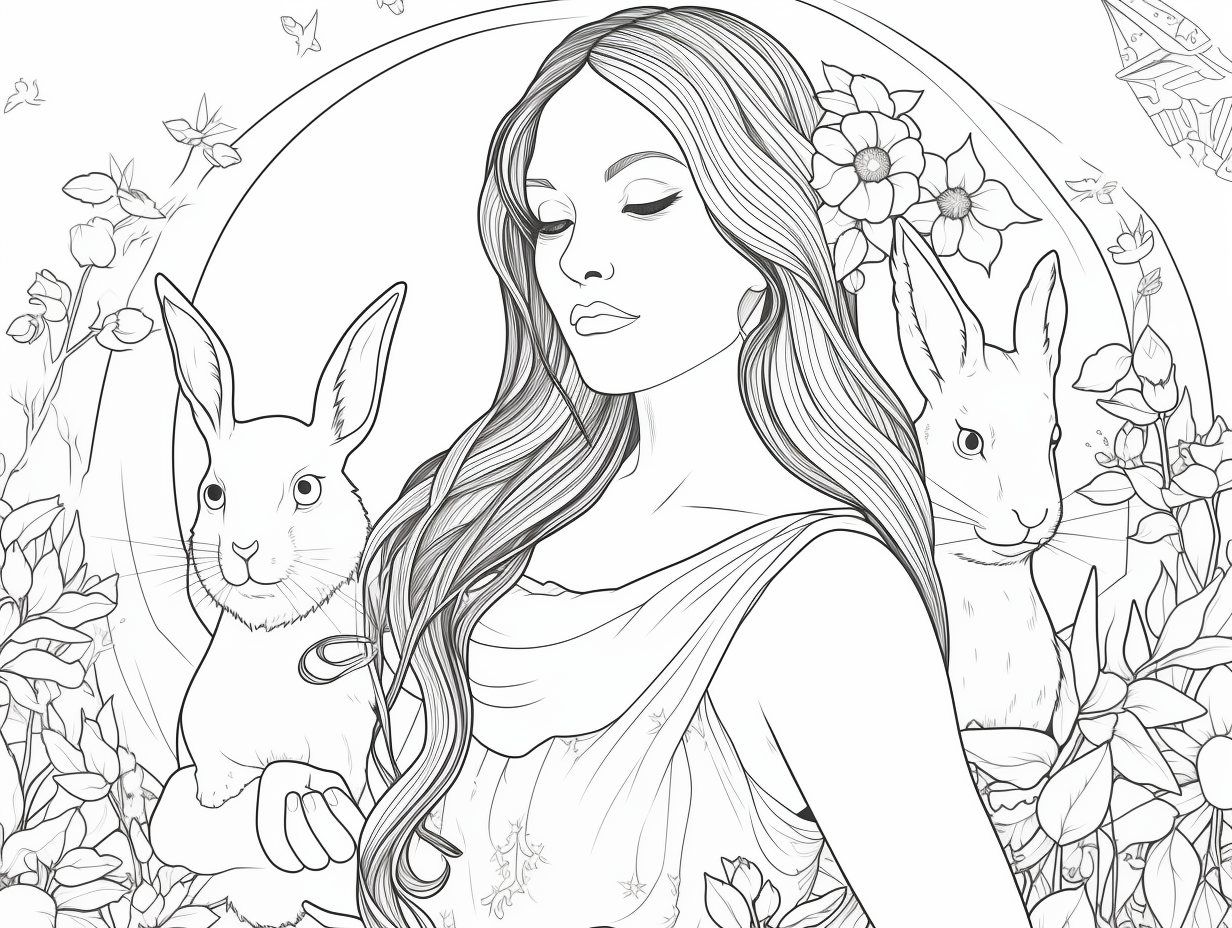Embrace Spring's Awakening: Discover The Joyful Ostara Colors
Spring is, in a way, almost here, and with it comes the delightful celebration of Ostara, also known as the spring equinox. This ancient pagan holiday, typically observed around March 20th in the Northern Hemisphere, marks a beautiful moment when light and dark find balance, and the earth begins its vibrant reawakening. It's a time, you know, for welcoming new life, for thinking about fertility, and for feeling the fresh energy of the season all around us.
This celebration, named after the Germanic goddess Ēostre or Ostara, really symbolizes renewal, the return of light after winter's long quiet, and the blossoming of life. As a matter of fact, many people find it a deeply meaningful time, especially within pagan and Wiccan traditions. Its themes of balance, renewal, and fertility mirror the earth’s own stirring, reminding us, perhaps, of our own capacity for growth.
One of the most charming ways to connect with Ostara's spirit is through its rich palette of colors. These hues, very much like the season itself, speak of freshness, new beginnings, and gentle energy. Understanding these **ostara colors** can truly help you embellish your home, create a sacred space, or just simply feel more in tune with this wonderful time of year.
Table of Contents
- What is Ostara, Anyway?
- The Meaning Behind Ostara Colors
- The Palette of Spring: Key Ostara Colors
- Decorating Your Space with Ostara Colors
- Ostara Colors and Their Connection to Easter
- Frequently Asked Questions About Ostara Colors
- Embracing the Colors of Renewal
What is Ostara, Anyway?
Ostara, or the spring equinox, is a pagan holiday that, you know, honors the arrival of spring. It's a time when the length of day and night are nearly equal, marking a shift towards longer, brighter days. This sabbat, typically celebrated in late March, is a deeply meaningful occasion for many, especially within pagan and Wiccan traditions, as it welcomes the earth's awakening.
The holiday is named after the Germanic goddess Ēostre, or Ostara, who is, essentially, the goddess of spring and dawn. Her stories and traditions, even now, still hold a place in Viking and Germanic heritage. She brings, in a way, the gift of renewal and new life to the earth, which is pretty special.
This celebration is a beautiful recognition of the vernal spring equinox, falling on March 21 each year in the Northern Hemisphere, and September 23 if you’re, perhaps, in the Southern Hemisphere. It's a time to discover celebration ideas, rituals, and how to truly embrace the season, you know, with all its newness.
The Meaning Behind Ostara Colors
The colors associated with Ostara are not just, well, pretty shades; they carry deep symbolic meaning, reflecting the very essence of the season. These hues are, quite simply, visual representations of the themes of fertility, renewal, and the return of light after winter's darkness. They help us, in a way, connect with the earth's awakening and the balance of light and dark.
When you choose to decorate with **ostara colors**, you're doing more than just making things look nice. You are, actually, enhancing your spiritual connection to this time of year. Each element, from the fresh flowers to the specific shades, represents a deeper meaning, helping to honor the season's arrival. It's about, you know, truly feeling the shift.
These colors, in some respects, are a visual echo of the earth's own gentle transformation. They invite us to bring the outside in, to celebrate the burgeoning life, and to embrace the spirit of purification and rebirth that comes with spring. So, picking these colors is, really, a way to participate in the season's magic.
The Palette of Spring: Key Ostara Colors
The **ostara colors** are, for the most part, a soft yet vibrant collection that mirrors the gentle awakening of nature. They are, you know, the colors you see as the first buds appear and the sun starts to feel warmer on your skin. These shades are very much about new beginnings and fresh growth, making them perfect for celebrating this time of year.
The most common colors associated with Ostara are, essentially, lemon yellow, pale green, and pale pink. However, other appropriate colors include grass green, all pastels, and robin's egg blue. These colors, you know, work together to create a feeling of lightness and hope, which is pretty much what spring is all about.
Gentle Pastels and Robin's Egg Blue
Pastel colors, in general, are a hallmark of Ostara, representing the delicate newness of spring. Think of the soft hues of crocuses and early blossoms, or the gentle light of dawn. These soft shades, like pale pink, pale green, and light blues, symbolize the tenderness of new life and the innocence of fresh starts. They are, actually, a gentle reminder that beauty can be found in softness.
Robin's egg blue, specifically, is a beautiful shade that is very much linked to Ostara. This color, you know, brings to mind the promise of new life, as it's the color of the eggs laid by robins, a classic symbol of spring. It speaks of hope, growth, and the delicate balance of nature, which is, in a way, quite profound.
Using these gentle pastels and robin's egg blue can, therefore, create a serene and hopeful atmosphere in your space. They encourage a feeling of calm and renewal, perfectly capturing the quiet yet powerful emergence of spring. It's like, you know, a visual breath of fresh air.
Sunny Yellows and Bright Oranges
Yellow, especially lemon yellow, is a very prominent **ostara color**, symbolizing the sun's increasing strength and the return of light. It brings feelings of joy, warmth, and optimism, much like the bright daffodils and primroses that pop up in early spring. This color, you know, truly embodies the energy of the sun shining brighter and longer each day.
Orange, too, plays a role in the Ostara palette, often representing warmth, enthusiasm, and the vibrant energy of the earth awakening. While perhaps not as dominant as yellow, it adds a touch of lively zest to the spring colors. It's, essentially, the color of a sunrise, full of promise and new beginnings, which is pretty fitting for this time of year.
Incorporating these sunny yellows and warm oranges into your celebrations can, in a way, invite feelings of happiness and vitality. They remind us of the sun's life-giving energy and the joyful spirit of the season. So, you know, they're perfect for brightening up any space.
Lively Greens and Fresh Lavender
Green, in its various shades from pale green to grass green, is, well, obviously a central **ostara color**. It symbolizes growth, fertility, and the lushness of the earth as it comes back to life. Think of the fresh shoots emerging from the soil and the trees beginning to bud; that's the essence of Ostara green. It's, basically, the color of life itself, you know.
Lavender, with its soft purple hue, also finds its place among Ostara colors. This shade, perhaps, represents spirituality, calm, and the magical qualities of spring. It can evoke the feeling of early spring flowers and the gentle, almost mystical, energy of the equinox. It's a color that, in a way, adds a touch of tranquility to the vibrant greens and yellows.
Using these lively greens and fresh lavenders helps to ground your Ostara decorations in the natural world. They connect you to the growing plants and the serene beauty of the season, reminding you of the earth's incredible power of renewal. It's like, you know, bringing a piece of the awakening forest into your home.
Decorating Your Space with Ostara Colors
Decorating your home and sacred space with **ostara colors** is a lovely way to truly embrace the spirit of the season. It's about, you know, bringing the outside in and creating an atmosphere that reflects the themes of renewal and new life. You can use these colors in so many ways to make your space feel fresh and inviting.
From eggs and hares to pastel colors and fresh flowers, each element you choose represents a deeper meaning. It's about creating a visual story of spring's arrival, which is, in a way, quite personal. So, you know, let your creativity bloom as you prepare your home for this special time.
Crafting a Colorful Ostara Altar
Decorating your Ostara altar with meaningful **ostara symbols** and colors can, in a way, enhance your spiritual connection to this time of year. An altar is a personal space for reflection and ritual, and infusing it with the right colors makes it feel more potent. You might use cloths in pale green or lemon yellow as a base, for example.
Add elements like fresh spring flowers in shades of pink, lavender, and white. Small, painted eggs in robin's egg blue or soft pastels are also perfect additions, symbolizing fertility and rebirth. You could, perhaps, include candles in colors like bright yellow or grass green to represent the returning light and growth. Learn more about Ostara rituals on our site, which can include altar decoration.
Consider adding crystals like clear quartz for clarity or aventurine for growth, which often have green hues. Fresh herbs like mint or basil, too, can bring natural green tones and a lovely scent. This kind of arrangement, you know, helps create a vibrant and meaningful focal point for your celebration.
Bringing Ostara Hues into Your Home
Beyond the altar, you can, you know, spread the joyful **ostara colors** throughout your entire home. Think about incorporating throw pillows, blankets, or even curtains in soft pastels or vibrant spring shades. A vase of fresh, colorful flowers on your dining table can instantly brighten a room, which is pretty simple to do.
Consider subtle touches like light green hand towels in the bathroom or yellow placemats in the kitchen. You can also, perhaps, use fairy lights with a warm glow to mimic the increasing sunlight. These small changes can, actually, make a big difference in how your home feels, inviting the fresh energy of spring indoors.
Spring cleaning for witches, as some call it, is also a great way to prepare your home for Ostara. As spring approaches, we, you know, prepare for rituals of purification, rebirth, and fertility. After a good clean, adding these colors feels even more refreshing and intentional, creating a truly welcoming space.
Egg Decorating: A Timeless Tradition
Decorating eggs is, you know, one of the most iconic ways to use **ostara colors** and celebrate the holiday. Eggs are powerful symbols of fertility, new life, and rebirth, which are central themes of Ostara. You can dye them in all the beautiful pastel shades, or use brighter yellows and greens, which is pretty fun.
This activity is not just for kids; it's a meditative and creative practice for anyone wanting to connect with the season's energy. You might, perhaps, paint intricate designs or simply use solid colors to represent different intentions for the coming season. It's a very hands-on way to engage with the symbolism, you know.
Once decorated, these eggs can be placed on your altar, arranged in bowls as home decor, or even given as small gifts to friends and family. They serve as a constant reminder of the new beginnings that Ostara brings, which is, actually, quite lovely.
Ostara Colors and Their Connection to Easter
It's interesting to note the strong connection between Ostara and Easter, especially when you look at the shared motifs and colors. Easter, celebrated after the first full moon following the vernal equinox, incorporates symbols of fertility and rebirth that are, in a way, very reminiscent of Ostara. The shared motifs—such as eggs and rabbits—are pretty striking, you know.
The pastel colors so often associated with Easter, like pale pinks, yellows, and blues, are, actually, directly linked to the traditional **ostara colors**. These hues represent the same themes of new life, spring's awakening, and hope that are central to both celebrations. It's like, you know, a continuous thread of symbolism.
While there is much debate in the pagan community regarding the origins of Ostara, the cultural overlap with Easter symbols is, essentially, undeniable. Eostre, or Ostara, is the Germanic goddess of spring, and her name is the root of the spring celebration now known as Easter. This connection, you know, highlights how ancient traditions can evolve and merge over time, still carrying similar messages of hope and renewal. For more on this, you might explore the historical connections between pagan festivals and modern holidays on sites like Britannica.
Frequently Asked Questions About Ostara Colors
What colors are associated with Ostara?
The colors most commonly associated with Ostara are pastels, yellow, orange, lavender, and green. More specifically, you know, lemon yellow, pale green, pale pink, grass green, and robin's egg blue are also very appropriate choices. These shades, essentially, mirror the gentle awakening of nature in springtime.
What are the symbols of Ostara?
The symbols of Ostara are, you know, quite delightful and represent new life and fertility. These include spring flowers, fairies, butterflies, rabbits, and eggs. Each symbol, in a way, embodies the themes of renewal, growth, and the return of light after winter, which is pretty meaningful.
What is the meaning of Ostara?
Ostara is a pagan celebration of the vernal spring equinox, marking the balance of light and dark. Its meaning revolves around themes of renewal, fertility, and abundance as the earth awakens to spring. It’s a time, you know, to welcome new life and celebrate the turning of the Wheel of the Year, which is, actually, quite significant.
Embracing the Colors of Renewal
As spring approaches, with Ostara 2025 coming up fast, the opportunity to embrace these beautiful and vibrant **ostara colors** is, you know, truly a gift. Imagine flowers blooming, birds singing, and the sun shining just a little brighter, and you'll understand the essence of these hues. They help us celebrate the arrival of spring and the balance of light and dark in a very tangible way.
Whether you're decorating eggs, adorning your altar, or simply bringing fresh flowers into your home, these colors serve as a gentle reminder of the earth's incredible power to renew itself. They invite us to connect with the natural world awakening around us, which is, essentially, a profound experience. You can find more ideas for celebrating this special time by exploring our Ostara celebration guide.

Ostara Coloring Sheet - Coloring Page

Ostara Inspired Coloring - Coloring Page

Ostara Inspired Coloring Design - Coloring Page